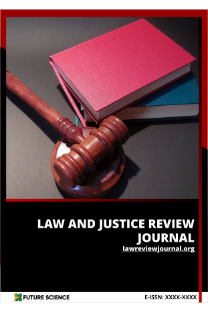An assessment of the lisbon treaty in light of the objectives of the leaken declaration
Avrupa Birliği'nin geleceğine ilişkin Leaken Deklarasyonu, AB içinde daha iyi bir yetki tanımı ve yetki paylaşımı, yasama araçlarının basit-leştirilmesini, daha fazla demokrasi, şeffaflaşma verimliliği sağlama zo-runluluğunu ve anayasayı çözülmesi gereken başlıca dört sorunlu alan olarak tespit etmiştir. Bu sorunları çare bulmak üzere Deklarasyon, bu gün Reform Anlaşması olarak bildiğimiz süreci başlatanAB'nin Gele-ceğineİlişkin Konvansiyon u ihdas etmiştir. Pek çok eleştiri almasına rağmen Reform Anlaşması lehinde söylenecek pek çok husus vardır. Yetkilerin sınırlandırılması, AB anlaşmaları ve yasama araçlarının basit-leştirilmesi, sütünlu yapının birleştirilmesi, ortak karar prosedürünün ge-nel karar alma yöntemi haline getirilmesi, oylama sistemindeki yeni değişiklikler, Konsey müzakerelerinin kamuya açılması, AB Parlamen-tosu ve ulusal parlamontoların yasama sürecine dahil edilmesi AB içinde demokratik meşruiyeti,şeffaflığı ve kurumların verimli çalışmasını artı-racaktır.
The Laeken Declaration on the Future of the European Union stated four primary challenging issues namely, a better division and definition of competence in the European Union, simplification of the Unions in-struments, more democracy, transparency and efficiency in the European Union and the constitution. In order to tackle these challenges, the Decla-ration introduced the Convention on the Future of Europe which paved the way for what we know as the Reform Treaty. Although the Reform Treaty received some criticisms from commentators there are several as-pects that can be stated on behalf of the Treaty. Delimitation of powers, simplification of the Treaties and legal instruments and the merger of the pillars, the adoption of co-decision as ordinary law making process, the opening of Council deliberations to the public, the involvement of the European Parliament and national parliaments in law making process, and new changes in the voting system will enhance the democratic le-gitimacy, transparency and increase efficiency of the Union.
___
AlbiA./Van ElsuwegeP, The EU Constitution, National Constitutions and Sover-eignty: an Assessment of a European Constitutional Order (2004) ELRev. 2004, 29 (6)Brady H/ Barysch K, The CER Guide to the Reform Treaty, available www. opendemocracy.net/article/democracy_power/europe_constitution/lisbon_reform_treaty (30.11.2007)
Craig P, Constitutional Process and Reform in the EU:Nice, Laeken, Convention and the IGC(2004)10(4)EPL, 653-675
Dashwood A,/Johnston A, The Institutions of the Enlarged EU Under the Regime of the Constitutional Treaty (2004)41CMLR,1481-1518
Dougan M, The Conventions Draft Constitutional Treaty: Bringing Europe Closer to its Lawyers (2003) ELRev 28(6)763-793.
Dukes A, What the Constitutional Treaty Means: Institutional Reform of the Euro-pean Union IAE 2005 available at www. iiea.com/images/managed/ publica-tions_attachments/ 5_ Dukes. pdf.(23.11.2007)
B. Editorial Comments, CMLRev (2007) 1229-1236
Giuliani J D, Understanding the European Council in Lisbon and the Reform Treaty www.robert-schuman.eu/doc/questions_europe/qe-76-en.pdf > (04.12.2007) House of Lords: The Treaty of Lisbon: an Impact Assessment,Volume I:Report , HL Paper 62-I, 2008
Kokott J/Rüth A, The European Convention and Its Draft Treaty Establishing a Constitution for Europe: Appropriate Answers to the Laeken Questions?(2003) 40 CMLR 1315-1345, 1320;
MenéndézA J: Chartering Europe; The Charter of Fundamental Rights of the European Union Arena Working Papers, WP 01/13, www.arena.uio.no /publicati-ons/wp01_13.htm> (13.12.2007)
MenéndézA J Between Laeken and the Deep Blue Sea: An Assessment of the Draft Constitutional Treaty from a Deliberative-Democratic Standpoint (2005) EPL11 (1) 105-144
Witte B, Simplification and reorganization of the European Treaties (2002) 39 CMLRev 1255-1287
Young,A L The Charter, Constitution and Human Rights: is this the Beginning or the End for Human Rights Protection by Community Law, (2005) 11(2) EPL, 219-240
The Reform Treaty for the European Union www.coalitionforreformtreaty.org.uk/ research_ articles/ European_ Movement _briefing.pdf > (04.12.2007)
- ISSN: 1309-9485
- Yayın Aralığı: Yılda 2 Sayı
- Başlangıç: 2010
- Yayıncı: Türkiye Adalet Akademisi
Sayıdaki Diğer Makaleler
Participation in international criminal law
Development in the court management system in Turkey
Diverse cultures and official laws: Multiculturalism and Euroscepticism?
Der moralische und rechtliche status und die schutzwürdigkeit des menschlichenembryonen
The history of alternative dispute resolutionsin the United States
Hümeyra Zeynep Nalçacıoğlu ERDEN
İnfluence of the christianityon the development of the European union
Über besondere regelung der verjährung bei straftaten gegen das kind systemkritische überlegung
